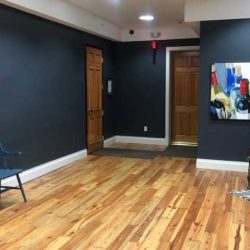High season for our Guanacaste vacation rentals is mid-December through Easter. We are already getting some reservation requests for the 2019/2020 high season.
In fact, we recently received a request to reserve our Condo Reeves for six weeks from late January to early March 2020. However, after much deliberation, we turned it down. Here’s why.
Long vacation stays are a tempting offer
We definitely thought long and hard about the request before turning it down because long vacation stays have their advantages:
Higher occupancy
With shorter bookings, you’re more likely to have gaps between bookings that don’t get filled. We have had some success dropping our rate to fill gaps at the last-minute, but that comes at a cost of lower rates.
If you have enough gaps that don’t get filled, your occupancy rate can go down, despite a strong initial flurry of reservations.
Less wear-and-tear on the property
When guests are checking in and out every couple of days, that’s a lot of activity. A long-stay guest gets a weekly cleaning, or at most biweekly if they request it. That’s less washing of linens, less cleaning product on surfaces, less coordination.
Our property managers certainly appreciate a long-stay here or there, especially during high season, because they do a lot of running around to manage cleanings and check-ins on a daily basis, and long stays reduce these activities.
Possible repeat stays year-over-year
Long vacation stays are sometimes associated with guests who return year-over-year, and this makes them a signal for possible repeat stays.
One of my friends, who owns several rentals in the Jersey Shore, frequently sells out her summer rentals the year before, simply on repeat stays. These can be reliable and profitable bookings.
However, there are downsides unique to long vacation stays

Fewer reviews
AirBNB is our main platform for booking guests. Guest reviews are critical to remaining top of mind for your area. If you have one long stay instead of ten shorter stays, that’s significantly fewer reviews over that time period.
The dates for this potential long-stay was during the high season. During the same time-frame this year, at Condo Boom, a comparable condo, we had 8 different stays and 37 nights booked. Since the reviews we get are generally positive, and people like to see recent positive reviews when they book, I’d rather have several positive reviews for that time than no reviews at all.
In fact, long-stay rentals are often booked directly (not on the AirBNB platform), in which case they can’t even leave a review.
Less word-of-mouth
Related to the problem of fewer reviews is the decrease of word-of-mouth that comes with fewer guests talking to others about your property.
We don’t have information on how our guests find us (something we’re trying to capture). However, I know that when we book our own travel, word-of-mouth referrals influence us. We’d rather have more people experiencing our property and possibly talking it up, when they return home from their wonderful Costa Rican vacation.
Lower rates
Most tangibly, longer stays come with a discount.
The party that wanted to stay offered to pay us a rate equivalent to around 25% off the regular rate. Yes we could have negotiated their payment to be higher, but if you consider that the high season will have a high occupancy rate anyway, offering a discount can be costly to your bottom line.
In fact, the 25% discount was based on a middle of the road estimate. If our income over that time is more towards the higher end, then the effective discount would be even higher, at over 30%.
These three factors determine overall vacation rental profitability

Your income (based on nightly rate and occupancy) and your ongoing expenses is what essentially determines your profitability. Here is a deeper look into these factors and how high season and long vacation stays affect them.
Factor 1 – Nightly rates
There is a big spread between the nightly rate during high season vs the nightly rate during the low season – about 30%.
Therefore, giving someone a 30% discount for a long stay during the high season (the potential effective discount in this case) in effect causes an extension of your low season because you are dropping your high season rate to your low season rate for an extended period of time.
Discounting for a long-stay during high season means that we would need to significantly increase our off-season rates to compensate. However, off-season is when we have fewer stays and significantly less market demand, so the odds of catching up to our target average rate are diminished.
Factor 2 – Occupancy
The more nights you rent out, the more revenue you generate. Here is a seasonal summary of Condo Boom’s performance for 2018, which has a full year of data and is very similar to Condo Reeves (Condo Reeves doesn’t have high season data for last year). Looking at four-month high, mid and low seasons:
- High season had 72% occupancy and was 43% of annual nights booked
- Mid season had 50% occupancy and was 33% of annual nights booked
- Low season had 37% occupancy and was 24% of annual nights booked
The high season occupancy number for 2018 was actually on the low side because 2018 was our first year, and we didn’t yet have a track record resulting in a few holes in the calendar. For 2019, our high season occupancy from December through March was higher, at 85%.
High season occupancy is already about as high as it can get. Therefore, to increase our profitability, the challenge is to get additional bookings in the medium and particularly the low seasons.
It would make more sense to offer discounts for long vacation stays in the low season to try to bump up the occupancy rate, to fill dates that otherwise would not be booked.
Expenses
There is less of an effect on expenses when you have a long-stay.
Most of the typical expenses are still necessary: utilities, supplies (laundry, cleaning, sundries), property management, and HOA (home owners association) fees. The exception is that your turnover and cleaning cost will be less. But with AirBNB, typically the cleaning cost is paid by the guest in the form of an additional fee, so actually even the cleaning expense is a wash.
Wear-and-tear is significant for a vacation rental, but you will have that expense whether you have long stays or short stays. The important thing is that your overall occupancy is as high as possible, and the higher the occupancy, the higher the wear and tear.
In 9 months of renting Condo Reeves, we’ve already had to fix doors, touch up paint, and replace things that originally came with the unit and were getting old, such as furniture, the water heater and 2 of the A/C units. Arguably those are start-up costs though, and not indicative of regular ongoing expenses.
Demand for long vacation stays is good news

The interest in long stays is great news for us. It means that people enjoy travelling to the region so much that they want to stay a long time. It also means there isn’t enough good monthly rental options, so that means the demand for short term rental units should continue to be very high.
In addition to this request to stay for six-weeks that we turned down, we had two other recent long-stay requests for the high season. The first one was someone who wanted to stay for 2 months but was bargain hunting, and wouldn’t pay nearly what we wanted. The second request was someone who wanted to stay for the ENTIRE high season! Which, for the reasons stated here, we are not interested in.
======
We would definitely consider long vacation stays for the low season (Sept thru Nov) and middle season (post-Easter thru summer). Increasing our flow of off-season guests is a focus of ours, and we’re experimenting with advertising to help (more on that in a future blog post!).


 We are Scott and Caroline, 50-somethings who spent the first 20+ years of our adult lives in New York City, working traditional careers and raising 2 kids. We left full-time work in our mid-40’s for location-independent, part-time consulting projects and real estate investing, in order to create a more flexible and travel-centric lifestyle.
We are Scott and Caroline, 50-somethings who spent the first 20+ years of our adult lives in New York City, working traditional careers and raising 2 kids. We left full-time work in our mid-40’s for location-independent, part-time consulting projects and real estate investing, in order to create a more flexible and travel-centric lifestyle.  Financial independence and early retirement is not something we originally focused on, but over time realized it was possible. Our free report,
Financial independence and early retirement is not something we originally focused on, but over time realized it was possible. Our free report, 






Thanks for sharing your thought process in your decision. Looks like you’ve had lots of growth between 2018-19! That’s awesome!
We are considering renting out part of our home on Airbnb and I really appreciate reading your reflections here.
Glad our reflections might be useful! The equation is definitely a little different when it is your own place vs a vacation rental, but many of the factors are the same, and important one being ‘time of the year’ demand based on your location.